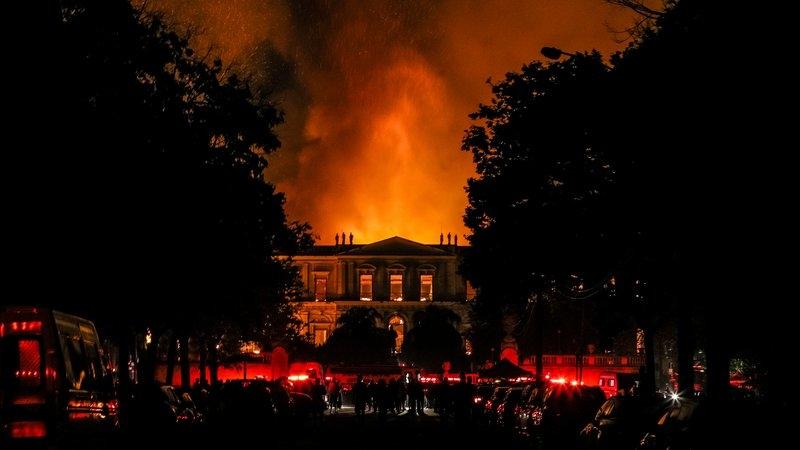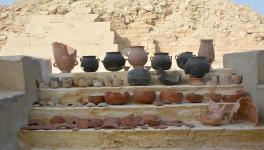Big Loss to Science History as Brazil’s National Museum is Devastated by Fire

Image Courtesy: RTE
The National Museum of Brazil, situated at Rio de Janeiro, was completely destroyed by a ravaging fire on Sunday. With the fire, valuable collections numbering about 20 million, turned into ashes. The massive collections had been a treasure for many scientific evidences.
Brazil’s National Museum had a long history to cherish. It was founded some 200 years back, at a time when Brazil didn’t even get its independence from Portugal. The oldest scientific institution of Brazil, the museum has been one of the largest and renowned ones in the entire Latin America.
The museum was a treasure for not only housing ancient Greek, Roman artifacts, but also for its huge paleontological collections. The most significant was the 11,500 year-old skull named Luzia, which was Latin America’s oldest human fossil. Bones of Maxakalisaurus, the long-necked dinosaur that was uniquely a Brazilian archaic animal, was among the valuable holdings of the museum. With the blazes, these fossil collections are feared to be destroyed. Egyptian mummies and Latin America’s oldest artifacts were also the valuables that, if destroyed, will no longer be available for anybody in future. Thus the devastation of this museum is not just a loss for Brazil’s or Latin America’s science, but also an irreplaceable loss for world science.
It is not yet clear what the exact degree of devastation is. Scientists say that some specimens of vertebrates and few botany collections were stored in a separate building and should be safe. But the most important collections, the invertebrate specimens, are completely destroyed. These specimens were important for world scientific research.
The building of the museum was also no less than history in itself. The complex was used as the residence of independent Brazil’s emperors till 1889. It was only in 1902 when the museum collections were transferred.
Scientists now claim that the tragedy was foreseeable. The continuous lack of funding for the maintenance and renovation of an ancient building has been put forward as the primary reason. Scientists had warned the managing authorities about the poor wiring condition and the possible short circuit and fire way back in 2004. Nothing much had improved since then for upgradation of the museum’s infrastructure. The poor fire protection facilities reflected nothing but the apathy of the authorities. The museum was maintained by the Federal University of Rio de Janeiro, funded by the Federal Government of Brazil.
In an interview to Science magazine, paleontologist Stephen Brusatte of University of Edinburgh, who had worked with the museum’s fossil collection, says “It makes me inordinately sad to think of those millions of specimens and exhibits, the product of 200 years of collection and the life’s work of so many hundreds of scientists and explorers, just going up in flames and turning to dust. It makes me want to cry”.
Get the latest reports & analysis with people's perspective on Protests, movements & deep analytical videos, discussions of the current affairs in your Telegram app. Subscribe to NewsClick's Telegram channel & get Real-Time updates on stories, as they get published on our website.
























